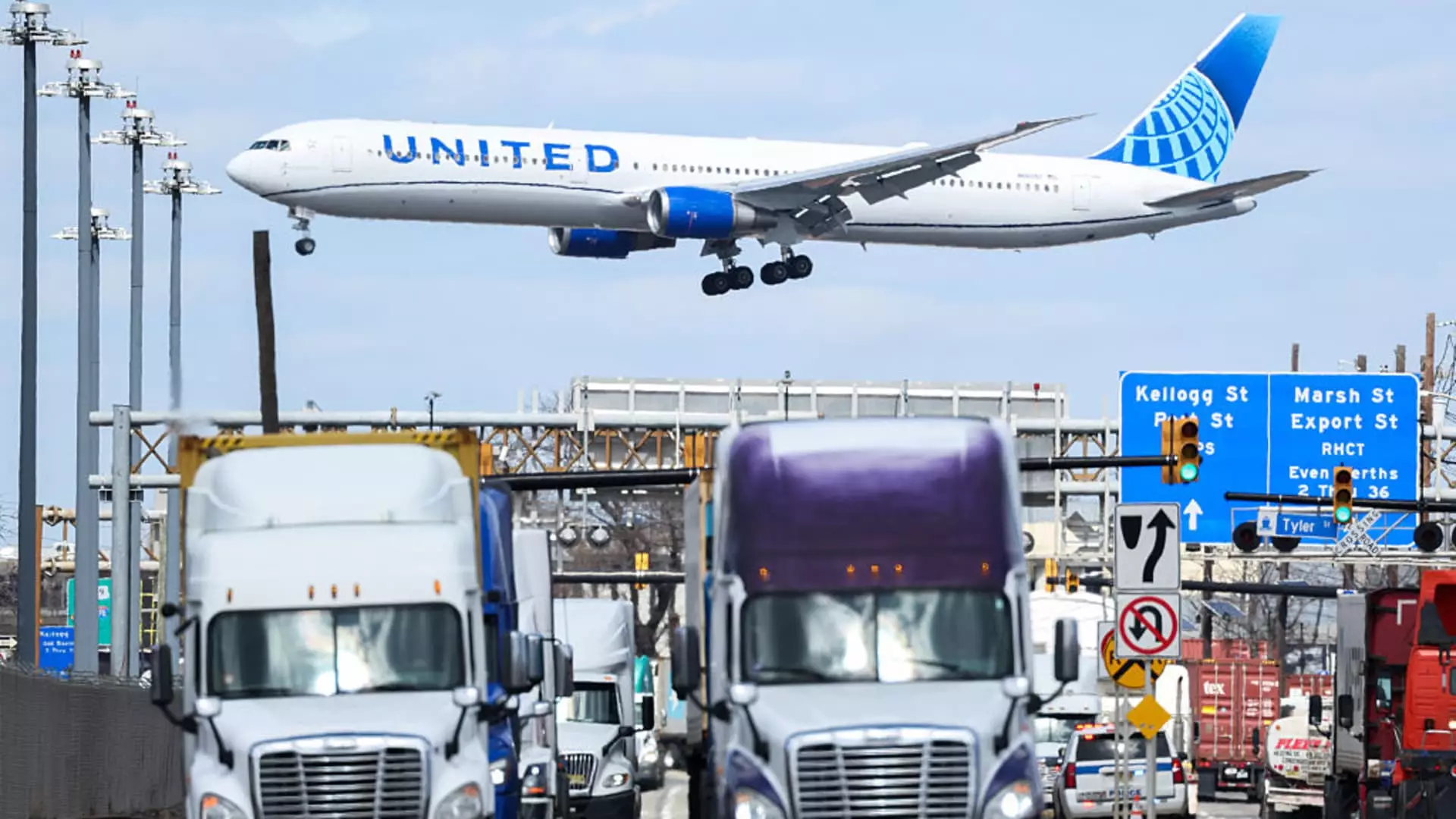United Airlines has recently positioned itself at a crossroads where optimism clashes with inevitable economic uncertainties. On Tuesday, the airline maintained its full-year forecast while simultaneously acknowledging the precarious nature of the U.S. economy. The decision to provide an alternative forecast underlines the inherent challenges in navigating a market that the company itself described as “impossible to predict.” In a world of fluctuating consumer confidence, this recognition is both refreshing and alarming. The reality is stark: cutthroat competition in the airline industry leads to a delicate balancing act between maintaining a robust profit margin and adapting swiftly to shifting economic winds.
Managing Expectations in a Volatile Environment
While United Airlines firmly held on to its optimistic earnings per share outlook of $11.50 to $13.50 for the year, it wisely tempered these projections by presenting a more conservative earnings estimate in the event of a recession, forecasting between $7 and $9 per share. This dual strategy reveals a company well aware of the broader economic currents that threaten its success. It paints a picture of a corporation both resolute in its belief in profitability yet cognizant of the risks posed by an unpredictable macroeconomic landscape.
To navigate these troubled waters, United plans to cut domestic flights by around 4% starting this summer. This decision, while seemingly counterintuitive, underscores a strategic pivot to align with disappointing domestic travel demand. It poses a critical question: can the airline successfully adapt and manage supply while still capturing the more lucrative international market that seems resilient amid economic strains?
The Resilience of Premium Offerings
Despite the challenges facing the domestic market, the airline has seen a notable surge in premium-cabin bookings, up 17% from this time last year. This sharp increase juxtaposed against declining revenue from domestic flights illustrates a significant shift in consumer behavior. Travelers appear willing to pay more for heightened experiences—a critical insight for United as it reassesses its strategies. Premium offerings may become the lifeblood for airlines looking to enhance profitability, illuminating a path forward where understanding customer preferences regarding value becomes essential.
Furthermore, United’s ability to generate a profit of $387 million in the first quarter while overcoming a prior loss demonstrates resilience indicative of a well-run company. The astonishing leap in adjusted earnings per share, from a dismal 38 cents to 91 cents, further reflects the positive momentum in the company’s operational efficiencies despite the swirling sea of financial uncertainty.
United Airlines’ Leadership in a Competitive Market
CEO Scott Kirby articulated a vision of United continually evolving through “multiyear plans,” a pledge that underscores his confidence in the infrastructure that has allowed United to prosper irrespective of external economic factors. His claim that this strategy has already yielded industry-leading margins serves as both a validation of their approach and an expectation for continued success in the face of adversity. It remains to be seen whether this confidence will translate into actual growth amid growing pressures from competitors, including Delta Air Lines, which has already shown reluctance to reaffirm its forecasts.
Yet, Kirby’s emphasis on adaptability also raises concerns about whether the company’s robust design can weather the storm of consumer hesitation brought about by ongoing economic pressures. This sentiment is more pronounced against the backdrop of broader national challenges—an economic climate riddled with trade wars, layoffs, and fluctuating fuel prices. Such factors amplify the challenging process of forecasting earnings and strategy-making in an era where unpredictability reigns supreme.
Challenging the Status Quo
As the airline navigates these complexities, it is crucial to consider the broader implications of its decision-making processes. While short-term profits are admirable, they must not come at the expense of long-term sustainability. United Airlines must challenge itself to engage in transparent practices while addressing consumer sentiment in real time. It’s an imperative not just for their own sake but for the industry at large, which has certainly suffered from the fallout of past miscalculations.
While United Airlines displays resilience and adaptability amid significant challenges, it also must remain vigilant and introspective. The ability to anticipate economic shifts and respond promptly will be key. They stand at a unique juncture that tests not just the strength of their forecasting abilities but also the depth of their engagement with consumers. This period of uncertainty offers an invaluable lesson on the necessity of agility—a requisite for survival in an unpredictable marketplace. United’s journey forward, fraught with both risks and opportunities, will serve as a pivotal moment for all stake-holders concerned.


Leave a Reply